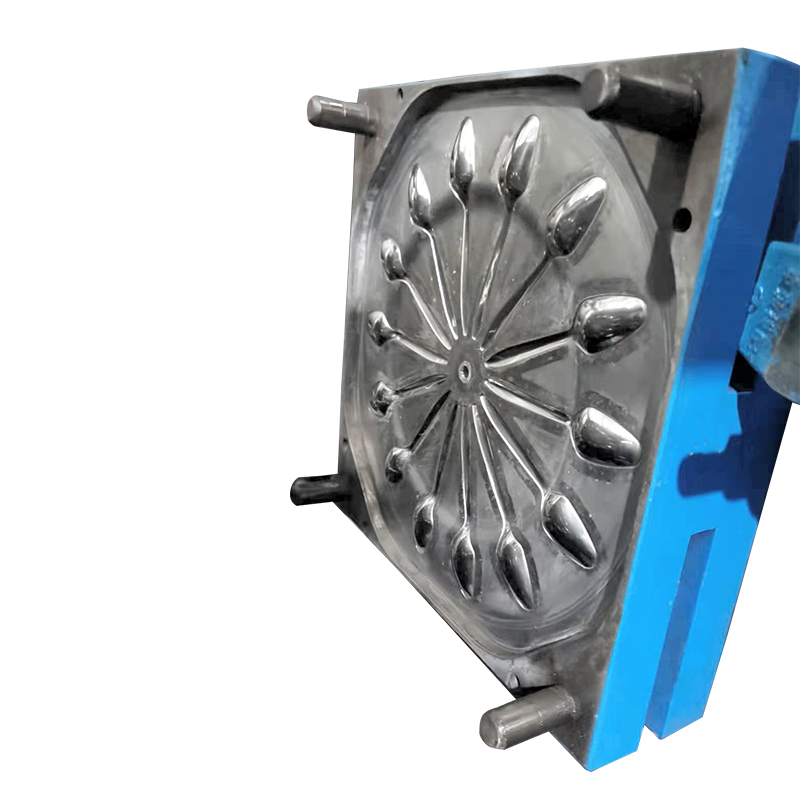The Plastic Thin Space Cup Mould represents an innovation in the manufacturing o...
-

+86-15068654601
-

No.62 Zhao Feng Road, Huangyan, Taizhou, Zhejiang, China

+86-15068654601

No.62 Zhao Feng Road, Huangyan, Taizhou, Zhejiang, China
In the modern manufacturing industry, the production of cutlery—such as knives, forks, spoons, and other dining utensils—requires precision and efficiency. The use of multi-cavity molds has revolutionized the cutlery manufacturing process by increasing output while ensuring consistent product quality. These molds allow multiple identical parts to be produced in a single cycle, making them an essential tool in high-volume production settings.

A multi-cavity cutlery mould is a specialized tool used in the injection molding process, designed to create multiple cutlery items in a single molding cycle. Unlike single-cavity molds, which produce only one part per cycle, multi-cavity molds can produce several identical parts simultaneously. This ability to produce multiple parts at once significantly increases productivity and reduces production costs, which is particularly important in industries that require high-volume manufacturing.
Multi-cavity molds are typically made of high-quality steel or other durable materials, capable of withstanding the pressures and temperatures involved in injection molding. The design of the mold includes cavities that correspond to the shape of the cutlery being produced. These cavities are carefully engineered to ensure that the cutlery produced is of consistent quality, with precise dimensions and finishes.
Multi-cavity cutlery molds can be classified based on several factors, including the number of cavities, the configuration of the mold, the materials used, and the molding process itself. Below, we will discuss the main classifications of multi-cavity cutlery molds.
The number of cavities in a mold determines how many parts can be produced in a single molding cycle. The number of cavities can vary depending on the complexity of the cutlery item being produced and the desired output. The common classifications are:
Two-Cavity Molds: These molds are designed to produce two identical cutlery items in each cycle. Two-cavity molds are often used for cutlery sets where the production volume is moderate, and the complexity of the items is relatively low. They are a popular choice for manufacturers producing knives, forks, and spoons in sets or pairs.
Four-Cavity Molds: These molds are designed to produce four parts per cycle. They are commonly used in high-volume production settings where there is a demand for more cutlery in less time. Four-cavity molds are suitable for cutlery items that are of average complexity, such as basic spoons, forks, or dessert knives.
Six-Cavity Molds and Beyond: Molds with six or more cavities are used in very high-volume production environments. They are often employed for simpler cutlery items or for products that require minimal intricate detailing. In such molds, high-speed, efficient injection molding processes are critical for maintaining quality and ensuring that all cavities fill evenly.
Larger multi-cavity molds, such as those with 12 or even 24 cavities, are typically found in large-scale production operations and are often used to produce high quantities of disposable or standard cutlery, such as plastic spoons or forks.
The configuration of the mold cavities plays a significant role in the design and efficiency of the injection molding process. Mold configurations can vary based on the layout of the cavities within the mold and the method used to inject material into them.
Vertical Multi-Cavity Molds: In these molds, the cavities are arranged vertically, one above the other. This configuration is commonly used for producing cutlery with handles, such as spoons and forks. The vertical arrangement allows for easier separation of parts once they are molded, and the mold is typically designed with ejector pins that assist in removing the molded items.
Horizontal Multi-Cavity Molds: Horizontal molds typically have the cavities arranged side-by-side. This configuration is often used for more complex designs or larger items. Horizontal molds are usually equipped with multiple injection nozzles, allowing for simultaneous injection into each cavity. They can be more efficient in terms of material flow, particularly when producing larger or more intricate cutlery items.